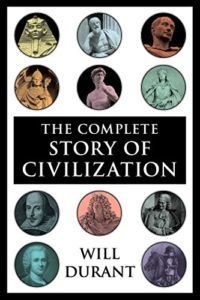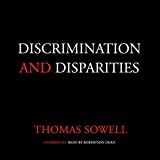Monday

Show Notes from the Current Episode
Cultivating Historical Perspective: Ten Years to Remember to Form a Framework
I mentioned last week that I ought to do a podcast segment on 20 or 30 dates you should know in order to get an historical perspective.
The idea was well received, so that's what I'm doing this week.
But I'm not doing 20-30 dates. I'm doing ten dates.
Actually, ten years.
That's what I'm offering this week.
Ten years that, I think, will help you get a fragile historical sense . . . but an historical sense all the same.
A few ground rules.
First, I am going from 1300 BC to 1492 AD. That's a large enough swath to cover and it pretty much takes you from the beginning of recorded historical time to the dawn of modernity. Well, I guess “historical time” is generally considered to start around 3000 BC, but let's face it, I'm hopelessly western-centric, which is to say, “Judeo-Christian.” Other than the journey of Abraham to Israel, I'm simply not too terribly interested, but suffice it to say: Prior to 1300, there were civilizations in an around present day Iraq (Mesopotamia) and in Egypt.
Second, I am saying “BC” and “AD.” Not to be a contrarian, but because it's simply easier to say. “BCE” is technically accurate, but it's pedantic and, let's face it, steeped in anti-Christian bigotry. I mean, why bother making it “BCE”? It adds a syllable and confuses the morons, who probably think it means “Before Christ Existed.”
Third, I'm not going multi-cultural. This is western history. If someone else wants to come up with ten years for developing an historical sense for the Chinese dynasties, Japanese Shoguns, Samoan boat people, and the aborigines in Australia, have at it, man.
Fourth, these years aren't subject to debate. I've picked them. They're subjective. They can't be debated anymore than you can debate whether Bruce Jenner is a chick. Subjectivity, baby.
Fifth, and most important: These aren't the ten most important years in pre-modern history. Not at all. Each year has tentacles: from it springs other reference points. Or each year marks a turning point of some sort. No doubt: each year is selected because something significant happened during it, but that's not the primary reason it was selected. It was selected b/c, if you memorize it, I think it will provide a great reference point to get your bearings in western civilization history.
One final note: In future episodes, I hope to show how each year has tentacles. In the process, I will introduce another two, three, maybe five years for each year referenced today. That will get me to the 20-30 dates I promised last week.
1300 BC: Moses leads the Israelites out of Egypt. We don't even know if Moses existed. We sure as heck don't know the exact date. Last week, I said “1200,” which was the consensus fifty years ago, but it appears 1300 is closer to the consensus now. From this date, you have the establishment of Israel, which leads pretty much to the entire Old Testament, including Samson, David, Solomon, the prophets, and all those crazy cats. If you know 1300 BC, you have a fix on Egypt at its greatness, albeit on the verge of decline; you have a solid reference point toward the beginning of the Old Testament.
586 BC: The fall of Judah to the Babylonians. The Babylonian Captivity. The Israel born of Moses was finished. In Episode 61, I talked about the Age of Ecumenical Empires and its importance: it changed western civilization's entire mental landscape. It brought us Stoicism, Gnosticism, Christianity. I date the start of Ecumenical Empires to 586, even though the first truly ecumenical empire was the Persian Empire that dethroned the Babylonians and let the Israelites return to Jerusalem in 539. If you know 586, you have a fix on the termination point of the independent nation of Israel (or Judah); you have a fix on the rise of the Persian Empire, which is the one that would shortly invade Greece and bring us the Battle of Marathon and the movie, 300.


399 BC: Death of Socrates. The greatest city-state killed its greatest man. But what's important here is that it fixes us at the end of the golden age of Greece, when Athens reigned supreme, and brings us to the verge of the destruction of classical Greece: Socrates taught Plato, who taught Aristotle, who taught Alexander the Great . . . who would end the Greek city-states.
27 BC: When Octavius became the first emperor of Rome, the Pax Romana started. Rome's civil wars were over for now, the Mediterranean was calm and peaceful. Trade and commerce. If you know 27 BC, you have a fix on many things: the end of the Roman Republic and start of the Roman Empire, Rome nearing its zenith, the world on the eve of Christianity.
313 AD: The Edict of Milan. 313 was huge as a reference point. Constantine issued the Edict of Milan, ending Christian persecution. Although I can't say 313 gives you a great fix on anything before it (more Roman history, though not peaceful), it gives you a fix on the rise of Christianity as the societal norm. If you know 313, you know end of paganism and rise of Catholic institutions, whether it's the Papacy as a civilizational force or monasteries.
622: Mohammed's flight to Medina. The Hejira. This is the official rise of Islam. Islam then “ran the table” extremely quickly, routing everything before it. Huge swaths of the middle east and northern Africa were Muslim within * years. It's unbelievable. People at the time couldn't even believe it. They didn't know there was anything in Arabia. One historian once said that, if a huge force of Eskimos emerged out of the Arctic and conquered all of Canada and portions of the northern United States, we'd have a feeling for how surprised western civilization was. By knowing 622, you have a fix on the rise of Islam AND you have a fix on the start of the Dark Ages.
Because here's the thing: the Dark Ages didn't start in 476, with the bogus “fall” of the Roman Empire. It started in the seventh century, when the trade over the Mediterranean encouraged by the Pax Romana completely collapsed in the wake of the Muslims learning naval warfare and shutting down the Sea. I believe this position is fairly well-accepted these days, though a more conventional position would hold that Europe was sliding heavily into the Dark Ages after 476 and 622 merely slammed the door shut.
1000: Stephen crowned king of Hungary. That was pretty much the last domino to fall: All of Europe except a few areas of the far European east was now Christian. Two of the three great forces that menaced Europe and made the Dark Ages especially dark–the Vikings and the Magyars (the Muslims were the third; they didn't convert)–were converted and now part of Catholic Europe. By knowing 1000, you have a fix on the end of the Dark Ages and the rise of what is properly considered the Middle Ages. It's nifty because 1000 is easy to remember. The relative peace also gave rise to prosperity, which would culminate in the Age of Discovery and the domination of Europe over the rest of the world (colonization).
1274: The death of everyone's favorite proto-postmodernist: Thomas Aquinas. Words failed him at the end of the life. They couldn't capture what he saw . . . what he now realized due to his mystical vision. So he fell silent. But I pick this year because of the synthesis he came up with prior to his death. It was the flowering of medieval philosophy, reflecting the flowering of medieval life in general. It was the high point of the middle ages. After him, Europe started its long decline that, today, is symbolized by the absurdity that is the European Union.
By knowing 1274 and the death of Aquinas, you have a fix on what years constituted the true middle ages (1000 to 1274) and the coming of the late middle ages and all the problems associated with them (the Black Plague, the Hundred Years War, the Avignon Exile of the Papacy, and many other unfortunate things).
1453: The fall of Constantinople. Technically, this is the end of the Roman Empire. It is what Edward Gibbon means by the decline AND FALL of the Roman Empire. By knowing 1453, you get a fix on the beginning of complete Islamic hegemony over the Middle East and the rise of Russia as the Third Rome. It also mark the end of 2,000 years of Roman history (the Roman Republic started in 509 BC; the Roman Kingdom, though details are shrouded in legend, existed for at least 100 years before that), which is astounding if you sit back and ponder it for about, oh, 17 seconds.
1492: Columbus. I think I can just leave it here. If you're not sure why 1492 gives you a fix on western civilization history, I'm afraid I can't help you. But to keep it brief: 1492 gives you a fix on the coming of the new world, the Reformation, and the meteoric rise of Europe as the greatest force on earth. It also marks the end of even the most expansive definition of the “Middle Ages” and the dawn of the modern age.



